Volume 1-8 (2009-16)
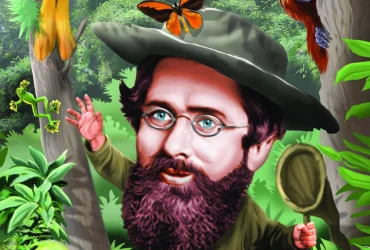 v7i3.191
v7i3.191ISSN: 1800-427X (print)
eISSN: 1800-427X (online)
Alfred Russel Wallace Centenary Issue
DOI:10.47605/tapro.v7i3.191
Proceedings of the Second International Conference on Alfred Russel Wallace and the Wallacea
Organised by the Indonesian Academy of Sciences
Wakatobi - Indonesia (10–13 November 2013)
J. Supriatna, A.A.T. Amarasinghe, and C. Margules (Editors)
Published date: 30 July 2015
Pp. 202–212.
DEVELOPMENT IN EASTERN INDONESIA: ARE THERE ALTERNATIVE APPROACHES?
Chris Margules*, Jeffrey Sayer, Agni K. Boedhihartono, David Makes, Sahotra Sarkar & Jatna Supriatna
*Corresponding author. E-mail: chrismargules@gmail.com
Abstract
Development in Wallacea, and eastern Indonesia generally, is gaining momentum. Here we query the applicability of what has become the standard or western Indonesia, model of development, for that part of Indonesia east of Wallace’s line. The numerous small islands with their finer grain of biological and cultural diversity suggest that alternative models focused locally with strong local community engagement might promote a different kind of economic development that maintains the natural resource base, including biodiversity, while providing opportunities for profitable enterprises to flourish. We describe some current examples that might be applicable more widely. The main problem with wider implementation is scaling up. Multiple conflicting goals have to be accommodated and because these are often not compatible with one another, the problem can only be solved at the landscape or seascape scale. We describe some modern methods for data management and computational analyses that can be used as decision support tools to help achieve this.
Key words : Wallacea, local development, landscape scale, multi-criteria analysis
eISSN: 1800-427X (online)
Alfred Russel Wallace Centenary Issue
DOI:10.47605/tapro.v7i3.191
Proceedings of the Second International Conference on Alfred Russel Wallace and the Wallacea
Organised by the Indonesian Academy of Sciences
Wakatobi - Indonesia (10–13 November 2013)
J. Supriatna, A.A.T. Amarasinghe, and C. Margules (Editors)
Published date: 30 July 2015
Pp. 202–212.
DEVELOPMENT IN EASTERN INDONESIA: ARE THERE ALTERNATIVE APPROACHES?
Chris Margules*, Jeffrey Sayer, Agni K. Boedhihartono, David Makes, Sahotra Sarkar & Jatna Supriatna
*Corresponding author. E-mail: chrismargules@gmail.com
Abstract
Development in Wallacea, and eastern Indonesia generally, is gaining momentum. Here we query the applicability of what has become the standard or western Indonesia, model of development, for that part of Indonesia east of Wallace’s line. The numerous small islands with their finer grain of biological and cultural diversity suggest that alternative models focused locally with strong local community engagement might promote a different kind of economic development that maintains the natural resource base, including biodiversity, while providing opportunities for profitable enterprises to flourish. We describe some current examples that might be applicable more widely. The main problem with wider implementation is scaling up. Multiple conflicting goals have to be accommodated and because these are often not compatible with one another, the problem can only be solved at the landscape or seascape scale. We describe some modern methods for data management and computational analyses that can be used as decision support tools to help achieve this.
Key words : Wallacea, local development, landscape scale, multi-criteria analysis
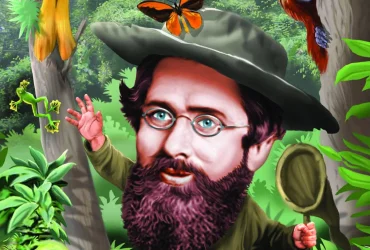 v7i3.190
v7i3.190ISSN: 1800-427X (print)
eISSN: 1800-427X (online)
Alfred Russel Wallace Centenary Issue
DOI:10.47605/tapro.v7i3.190
Proceedings of the Second International Conference on Alfred Russel Wallace and the Wallacea
Organised by the Indonesian Academy of Sciences
Wakatobi - Indonesia (10–13 November 2013)
J. Supriatna, A.A.T. Amarasinghe, and C. Margules (Editors)
Published date: 30 July 2015
Pp. 193–201.
DEFINING PRIORITIES IN THE MIDST OF UNCERTAINTY: THE CEPF ECOSYSTEM PROFILE PROCESS FOR WALLACEA
Pete Wood*, Hanom Bashari, Agus Hermansyah, Jihad S. Udin, Hilda Lionata, Shinta Pardede, Ria Saryanthi & Bambang Tetuka
*Corresponding author. E-mail: pete.n.wood@gmail.com
Abstract
Conservation priorities in Wallacea were identified to inform planning of a Critical Ecosystem Partnership Fund (CEPF) grants facility. Priorities were defined using locality data for 560 globally threatened species which occur in Wallacea, as defined by IUCN. 251 terrestrial and freshwater Key Biodiversity Areas (KBAs) were identified. Locality records also allowed the identification of 74 marine KBAs, and information on range and habitat was used to identify a further 66 candidate marine KBAs. Approximately one-third of terrestrial KBAs have protected area status. To help focus conservation efforts, twenty-four terrestrial KBAs with single-site endemics and critically endangered species were identified. The study highlights the lack of data on many species, and the lack of a centralized repository for biodiversity information on Wallacea. Urgent research needs include survey work to confirm the presence of species in more sites, taxonomic work to clarify the status of some species and sub-species, and expert-lead threat assessments to update the Red List.
Key words : Biodiversity, conservation, KBA, Red Data Book, Threatened species
eISSN: 1800-427X (online)
Alfred Russel Wallace Centenary Issue
DOI:10.47605/tapro.v7i3.190
Proceedings of the Second International Conference on Alfred Russel Wallace and the Wallacea
Organised by the Indonesian Academy of Sciences
Wakatobi - Indonesia (10–13 November 2013)
J. Supriatna, A.A.T. Amarasinghe, and C. Margules (Editors)
Published date: 30 July 2015
Pp. 193–201.
DEFINING PRIORITIES IN THE MIDST OF UNCERTAINTY: THE CEPF ECOSYSTEM PROFILE PROCESS FOR WALLACEA
Pete Wood*, Hanom Bashari, Agus Hermansyah, Jihad S. Udin, Hilda Lionata, Shinta Pardede, Ria Saryanthi & Bambang Tetuka
*Corresponding author. E-mail: pete.n.wood@gmail.com
Abstract
Conservation priorities in Wallacea were identified to inform planning of a Critical Ecosystem Partnership Fund (CEPF) grants facility. Priorities were defined using locality data for 560 globally threatened species which occur in Wallacea, as defined by IUCN. 251 terrestrial and freshwater Key Biodiversity Areas (KBAs) were identified. Locality records also allowed the identification of 74 marine KBAs, and information on range and habitat was used to identify a further 66 candidate marine KBAs. Approximately one-third of terrestrial KBAs have protected area status. To help focus conservation efforts, twenty-four terrestrial KBAs with single-site endemics and critically endangered species were identified. The study highlights the lack of data on many species, and the lack of a centralized repository for biodiversity information on Wallacea. Urgent research needs include survey work to confirm the presence of species in more sites, taxonomic work to clarify the status of some species and sub-species, and expert-lead threat assessments to update the Red List.
Key words : Biodiversity, conservation, KBA, Red Data Book, Threatened species
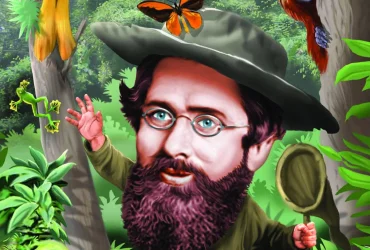 v7i3.189
v7i3.189ISSN: 1800-427X (print)
eISSN: 1800-427X (online)
Alfred Russel Wallace Centenary Issue
DOI:10.47605/tapro.v7i3.189
Proceedings of the Second International Conference on Alfred Russel Wallace and the Wallacea
Organised by the Indonesian Academy of Sciences
Wakatobi - Indonesia (10–13 November 2013)
J. Supriatna, A.A.T. Amarasinghe, and C. Margules (Editors)
Published date: 30 July 2015
Pp. 170–192, Pls. 10–12.
PRIMATES OF SULAWESI: AN UPDATE ON HABITAT DISTRIBUTION, POPULATION AND CONSERVATION
Jatna Supriatna*, Nurul L. Winarni & Asri A. Dwiyahreni
*Corresponding author. E-mail: jatna.supriatna@gmail.com
Abstract
Wallacea holds great significance not only for evolution and biogeography but also for conservation. No less than 98 species of Wallacea’s endemic mammals, birds, and amphibians appear on the IUCN Red List of globally threatened species. The primates of Wallacea show high diversity and endemicity within a very narrow range. There are 20 species of primates in Wallacea, of which 18 are found only in Sulawesi and the surrounding islands. Among those, three have been described as new species in only the last 10 years, Tarsius tumpara, T. wallacei, and T. lariang. Their habitat is located outside of existing protected areas, which means they need special consideration for their conservation. T. tumpara is one of the 25 rarest primates in the world while Macaca nigra from North Sulawesi has been included as an endangered species on the IUCN Red List. GIS analysis of the habitats of those endemic species shows that the extent of their habitats is shrinking dramatically in North and South Sulawesi and on the small islands of the north and east coast of Sulawesi.
Key words : Sulawesi, endangered, endemic, mammals, protected areas, Tarsius, Wallacea
eISSN: 1800-427X (online)
Alfred Russel Wallace Centenary Issue
DOI:10.47605/tapro.v7i3.189
Proceedings of the Second International Conference on Alfred Russel Wallace and the Wallacea
Organised by the Indonesian Academy of Sciences
Wakatobi - Indonesia (10–13 November 2013)
J. Supriatna, A.A.T. Amarasinghe, and C. Margules (Editors)
Published date: 30 July 2015
Pp. 170–192, Pls. 10–12.
PRIMATES OF SULAWESI: AN UPDATE ON HABITAT DISTRIBUTION, POPULATION AND CONSERVATION
Jatna Supriatna*, Nurul L. Winarni & Asri A. Dwiyahreni
*Corresponding author. E-mail: jatna.supriatna@gmail.com
Abstract
Wallacea holds great significance not only for evolution and biogeography but also for conservation. No less than 98 species of Wallacea’s endemic mammals, birds, and amphibians appear on the IUCN Red List of globally threatened species. The primates of Wallacea show high diversity and endemicity within a very narrow range. There are 20 species of primates in Wallacea, of which 18 are found only in Sulawesi and the surrounding islands. Among those, three have been described as new species in only the last 10 years, Tarsius tumpara, T. wallacei, and T. lariang. Their habitat is located outside of existing protected areas, which means they need special consideration for their conservation. T. tumpara is one of the 25 rarest primates in the world while Macaca nigra from North Sulawesi has been included as an endangered species on the IUCN Red List. GIS analysis of the habitats of those endemic species shows that the extent of their habitats is shrinking dramatically in North and South Sulawesi and on the small islands of the north and east coast of Sulawesi.
Key words : Sulawesi, endangered, endemic, mammals, protected areas, Tarsius, Wallacea
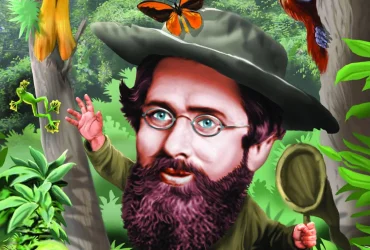 v7i3.188
v7i3.188ISSN: 1800-427X (print)
eISSN: 1800-427X (online)
Alfred Russel Wallace Centenary Issue
DOI:10.47605/tapro.v7i3.188
Proceedings of the Second International Conference on Alfred Russel Wallace and the Wallacea
Organised by the Indonesian Academy of Sciences
Wakatobi - Indonesia (10–13 November 2013)
J. Supriatna, A.A.T. Amarasinghe, and C. Margules (Editors)
Published date: 30 July 2015
Pp. 157–169, Pls. 8–9.
EX-SITU CONSERVATION OF PLANT SPECIES IN INDONESIA WITH A FOCUS ON WALLACEA
Ismayadi Samsoedin*, Kuswata Kartawinata & Ugi Sugiarti
*Corresponding author. E-mail: isamsoedin@yahoo.com
Abstract
Biodiversity conservation is a national priority in Indonesia as a part of the implementation of sustainable development. Both in-situ and ex-situ conservation should be practised so as to make certain that biodiversity can be conserved, studied and sustainably utilized. The Indonesian Institute of Sciences (LIPI) and Ministry of Environment & Forestry (KLHK) are responsible for the conservation of biodiversity as the scientific authority and management authority, respectively. Several pathways of ex-situ conservation may be undertaken through restoration of degraded ecosystems, improvement of fallows, development of arboreta, botanical gardens (BG), city parks, and biodiversity parks, planting road-side trees and rehabilitation of degraded lands using indigenous species, particularly rare and protected species. Ex-situ conservation of plant species through the above-mentioned pathways will become increasingly important, as in-situ conservation is facing many constraints. Several sites in Wallacea have been designated as ex-situ conservation areas such as the Toraut Arboretum at Bogani Nani Warta Bone in North Sulawesi [proposed by the Wallacea Development Institute (WDI), and established by local government in 1994], and five new botanical gardens: Massenrempulu, Jompie, Minahasa, Pucak, and Kendari. This paper describes the roles of the floristic conservation pathways and outlines the development of the above-mentioned arboretum and botanical gardens as case examples.
Key words : arboretum, biodiversity parks, botanical gardens, indigenous, city parks, Sulawesi
eISSN: 1800-427X (online)
Alfred Russel Wallace Centenary Issue
DOI:10.47605/tapro.v7i3.188
Proceedings of the Second International Conference on Alfred Russel Wallace and the Wallacea
Organised by the Indonesian Academy of Sciences
Wakatobi - Indonesia (10–13 November 2013)
J. Supriatna, A.A.T. Amarasinghe, and C. Margules (Editors)
Published date: 30 July 2015
Pp. 157–169, Pls. 8–9.
EX-SITU CONSERVATION OF PLANT SPECIES IN INDONESIA WITH A FOCUS ON WALLACEA
Ismayadi Samsoedin*, Kuswata Kartawinata & Ugi Sugiarti
*Corresponding author. E-mail: isamsoedin@yahoo.com
Abstract
Biodiversity conservation is a national priority in Indonesia as a part of the implementation of sustainable development. Both in-situ and ex-situ conservation should be practised so as to make certain that biodiversity can be conserved, studied and sustainably utilized. The Indonesian Institute of Sciences (LIPI) and Ministry of Environment & Forestry (KLHK) are responsible for the conservation of biodiversity as the scientific authority and management authority, respectively. Several pathways of ex-situ conservation may be undertaken through restoration of degraded ecosystems, improvement of fallows, development of arboreta, botanical gardens (BG), city parks, and biodiversity parks, planting road-side trees and rehabilitation of degraded lands using indigenous species, particularly rare and protected species. Ex-situ conservation of plant species through the above-mentioned pathways will become increasingly important, as in-situ conservation is facing many constraints. Several sites in Wallacea have been designated as ex-situ conservation areas such as the Toraut Arboretum at Bogani Nani Warta Bone in North Sulawesi [proposed by the Wallacea Development Institute (WDI), and established by local government in 1994], and five new botanical gardens: Massenrempulu, Jompie, Minahasa, Pucak, and Kendari. This paper describes the roles of the floristic conservation pathways and outlines the development of the above-mentioned arboretum and botanical gardens as case examples.
Key words : arboretum, biodiversity parks, botanical gardens, indigenous, city parks, Sulawesi
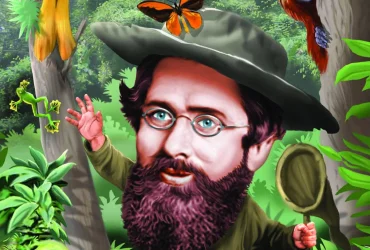 v7i3.187
v7i3.187ISSN: 1800-427X (print)
eISSN: 1800-427X (online)
Alfred Russel Wallace Centenary Issue
DOI:10.47605/tapro.v7i3.187
Proceedings of the Second International Conference on Alfred Russel Wallace and the Wallacea
Organised by the Indonesian Academy of Sciences
Wakatobi - Indonesia (10–13 November 2013)
J. Supriatna, A.A.T. Amarasinghe, and C. Margules (Editors)
Published date: 30 July 2015
Pp. 151–156.
GEOGRAPHICAL AND GENETIC DIVERSITY OF HEPATITIS B VIRUS IN THE WALLACEA, INDONESIA
Meta Dewi Thedja & David Handojo Muljono*
*Corresponding author. E-mail: davidhm@eijkman.go.id
Abstract
Ambon Bay is situated in the Wallacea biogeographical area. Despite various studies on marine natural resources reported from this bay, limited information is available on marine bacteria that produce compounds with potential biotechnological applications. We report here preliminary results of our attempt to isolate bacteria of this group from Ambon Bay. Nine different isolates were obtained, but only eight indicated potential as producers of compounds with biotechnological potential. Two isolates indicated agarolytic bacteria characteristics, whereas one showed the properties of exopolysaccharide (EPS) producing bacteria. Three isolates produced various pigments. Two were identified tentatively as members of actinomycetes, a group known as a prolific producer of antimicrobial compounds. Preliminary identification of the cell morphologies of each isolate revealed the dominance of cocci-shaped bacteria. Most of them showed optimal growth in 1 to 7 days when incubated at 30°C. These results indicate that Ambon Bay waters and the surrounding area could harbour marine bacteria with potential features for biotechnological applications.
Key words : genetic diversity, genotype, hepatitis B virus (HBV), subgenotypes
eISSN: 1800-427X (online)
Alfred Russel Wallace Centenary Issue
DOI:10.47605/tapro.v7i3.187
Proceedings of the Second International Conference on Alfred Russel Wallace and the Wallacea
Organised by the Indonesian Academy of Sciences
Wakatobi - Indonesia (10–13 November 2013)
J. Supriatna, A.A.T. Amarasinghe, and C. Margules (Editors)
Published date: 30 July 2015
Pp. 151–156.
GEOGRAPHICAL AND GENETIC DIVERSITY OF HEPATITIS B VIRUS IN THE WALLACEA, INDONESIA
Meta Dewi Thedja & David Handojo Muljono*
*Corresponding author. E-mail: davidhm@eijkman.go.id
Abstract
Ambon Bay is situated in the Wallacea biogeographical area. Despite various studies on marine natural resources reported from this bay, limited information is available on marine bacteria that produce compounds with potential biotechnological applications. We report here preliminary results of our attempt to isolate bacteria of this group from Ambon Bay. Nine different isolates were obtained, but only eight indicated potential as producers of compounds with biotechnological potential. Two isolates indicated agarolytic bacteria characteristics, whereas one showed the properties of exopolysaccharide (EPS) producing bacteria. Three isolates produced various pigments. Two were identified tentatively as members of actinomycetes, a group known as a prolific producer of antimicrobial compounds. Preliminary identification of the cell morphologies of each isolate revealed the dominance of cocci-shaped bacteria. Most of them showed optimal growth in 1 to 7 days when incubated at 30°C. These results indicate that Ambon Bay waters and the surrounding area could harbour marine bacteria with potential features for biotechnological applications.
Key words : genetic diversity, genotype, hepatitis B virus (HBV), subgenotypes
Hubungi Kami
The ultimate aim of the journal is to provide an effective medium for communication of the latest and best scientific information.
Copyright © 2020 Taprobanica. All Rights Reserved
Jasa Pembuatan Website by IKT




